travel mexico quintana roo tulum mayan ruins
The Mayan ruins at Tulum are the only known Mayan settlement right on the coast.
For our tour, we had the most knowledgeable, passionate guide we have ever met, Angel de Jesus, whose grandmother was Mayan,
and whose father was a guide for forty-some years before him.
He stated when we began that his goal was to break stereotypes both of Mexico and the Manyan culture.
The ruins cover a fairly large open area, but tourists flock in in huge numbers and long lines.
This religious and governmental site is architecturally laid out based on Mayan culture and astrological mathematics.
TRAVEL: January 2013 -
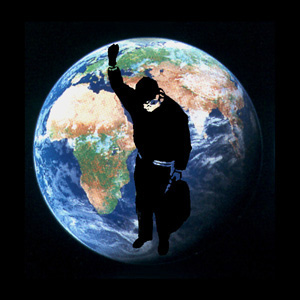
This location has earned an overall four star (very good) rating from
Travel Fanatics Unlimited
****
unless noted otherwise all images copyright d. holmes chamberlin jr architect llc
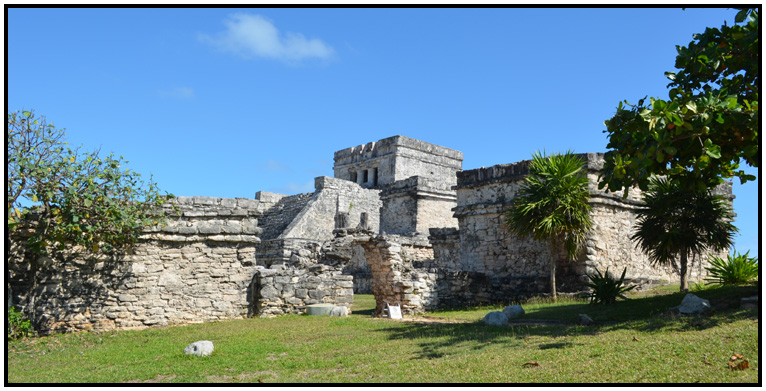
El Castillo from the southwest, Tulum Mayan Ruins, Quintana Roo, Mexico, 2013.
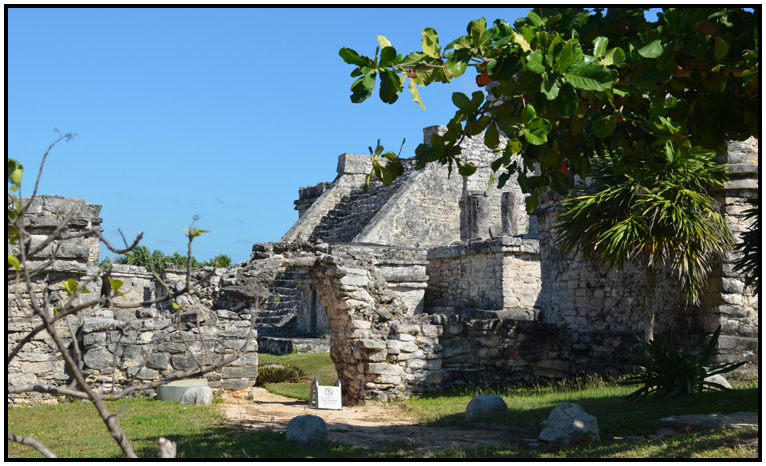
Ceremonial steps, El Castillo, Tulum Mayan Ruins, Quintana Roo, Mexico, 2013.
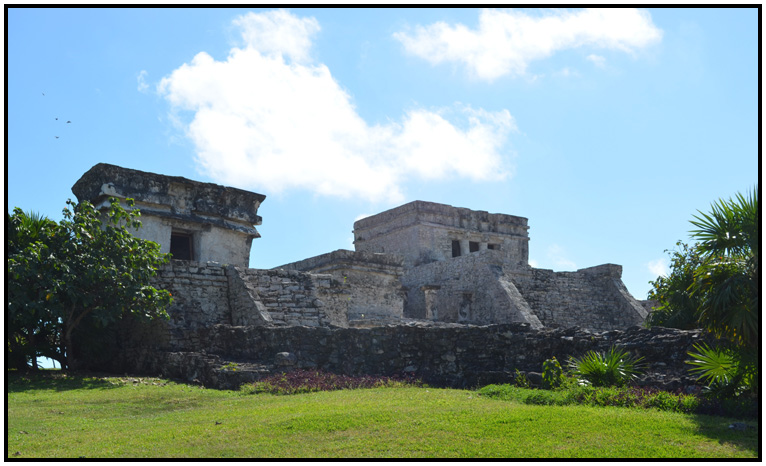
El Castillo from the northwest showing the "Decending God Temple" where the sun rises every spring.
Tulum Mayan Ruins, Quintana Roo, Mexico, 2013.


Detail of the "Decending God Temple" and the upside down figure over the doorway.
Angel, our guide, explains that this figure represents the Mayan's position as he enters the world from the mother's womb... the Mayan mother who gives birth standing.
El Castillo, Tulum Mayan Ruins, Quintana Roo, Mexico, 2013.
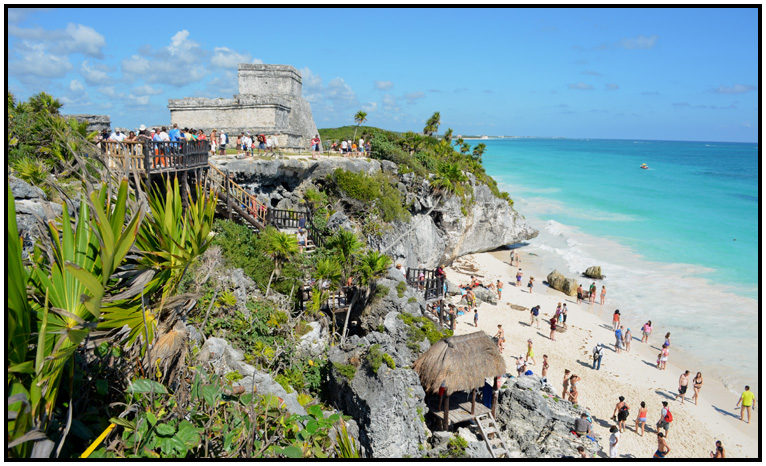
El Castillo situated on the bluff above the sea where it greets the morning sun and forcasts the seasons.
Tulum Mayan Ruins, Quintana Roo, Mexico, 2013.
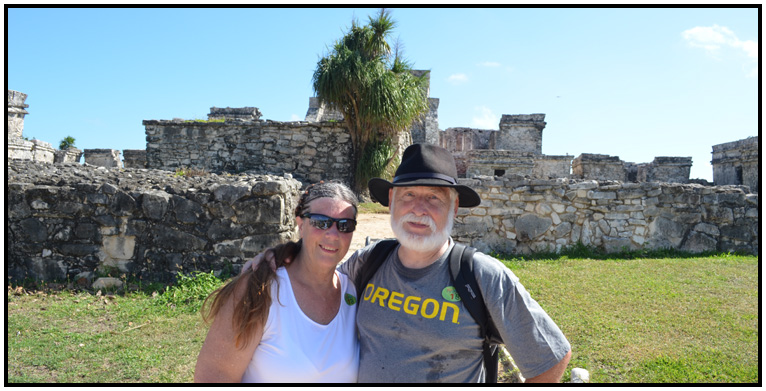
A hot couple in front of El Castillo, Tulum Mayan Ruins, Quintana Roo, Mexico, 2013.
photo by Angel de Jusus
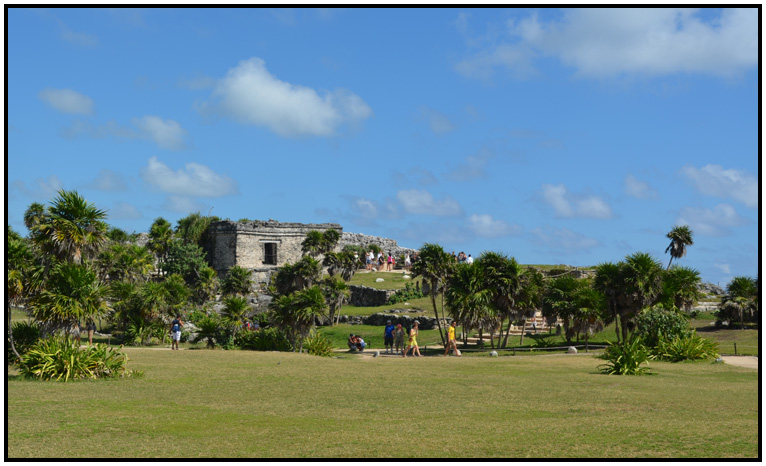
View from the central "courtyard" looking north, Tulum Mayan Ruins, Quintana Roo, Mexico, 2013.

Tulum Mayan Ruins, Quintana Roo, Mexico, 2013.
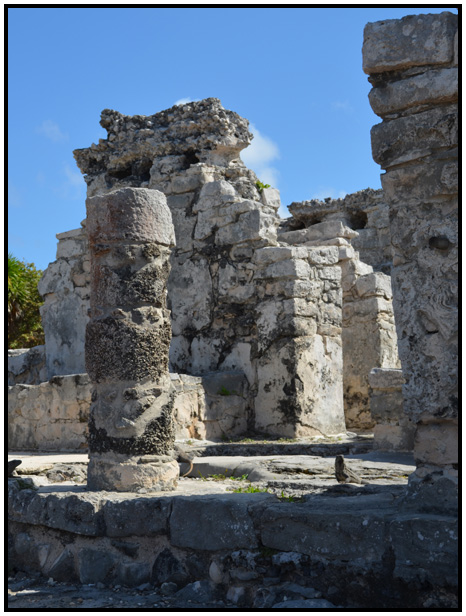
Tulum Mayan Ruins, Quintana Roo, Mexico, 2013.
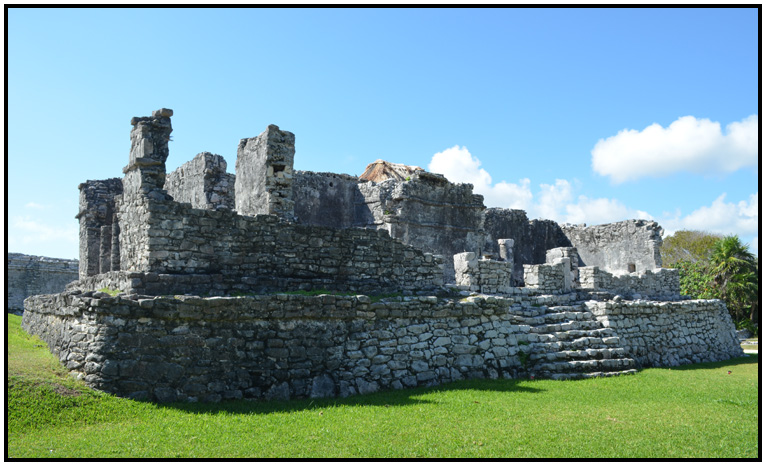
Tulum Mayan Ruins, Quintana Roo, Mexico, 2013.
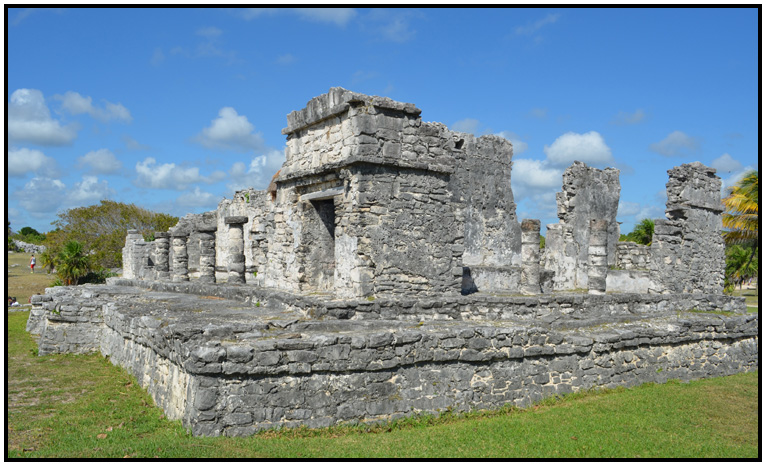
Tulum Mayan Ruins, Quintana Roo, Mexico, 2013.
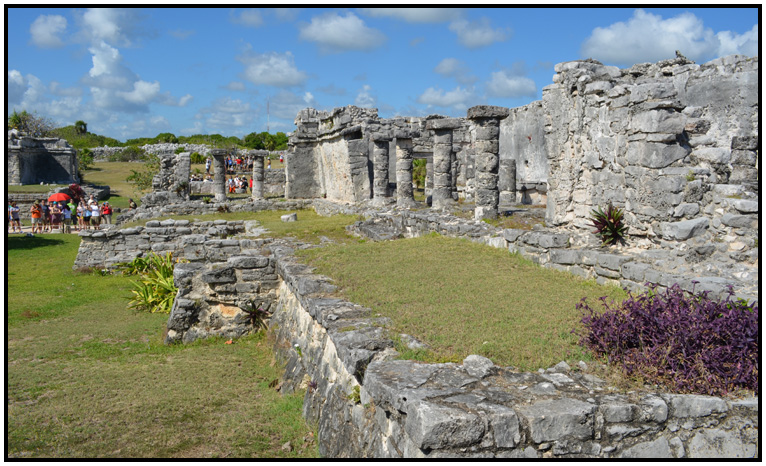
Tulum Mayan Ruins, Quintana Roo, Mexico, 2013.
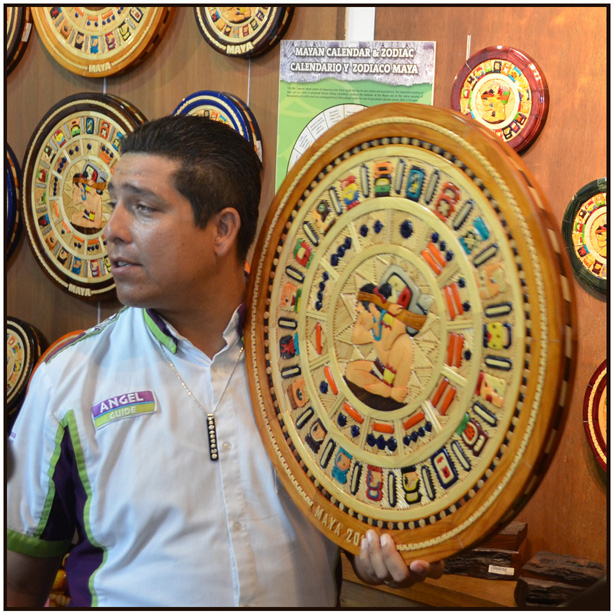
Our guide, Angel de Jesus, explains the fantastically accurate and detailed Mayan calendar
and how it differs from the later Aztec calendar. Maya-Ha, Tulum Mayan Ruins, Quintana Roo, Mexico, 2013.

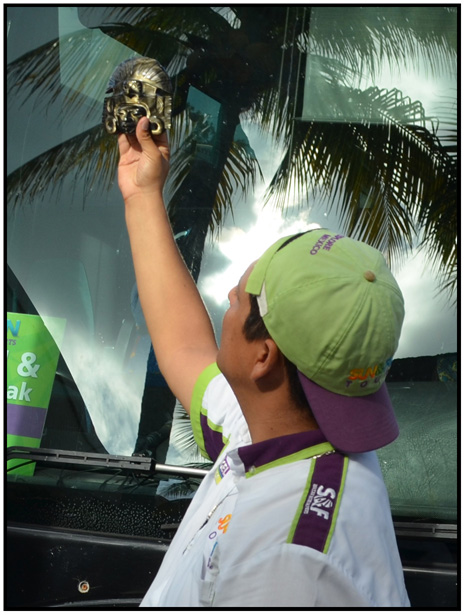
Angel shows how an obsidian mask can "turn to gold" when seen in the sun.
He explained that is why the conquistadors thought they had found El Dorado, the city of gold, when they saw the Mayan temples trimmed in obsidian.
Hand-carved masks, similar to this one only half the size, cost about $150 at the cultural center, Maya-Ha, near Tulum, Quintana Roo, Mexico, 2013.
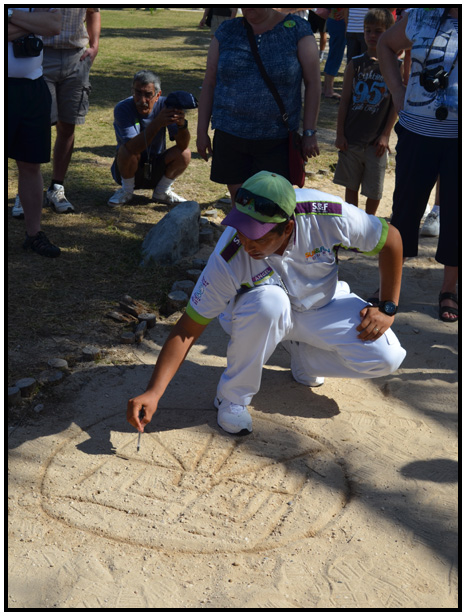
Angel explains the circular/cyclical nature of Mayan culture, architecture, and astronomy, Tulum Mayan Ruins, Quintana Roo, Mexico, 2013.
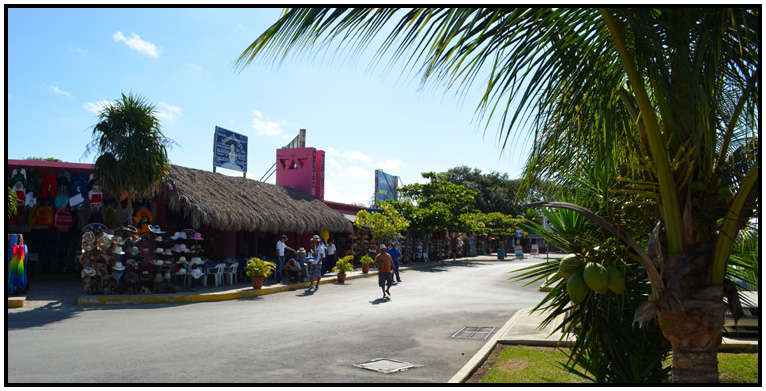
This is the huge area of shops that greet visitors at the parking area, Tulum Mayan Ruins, Quintana Roo, Mexico, 2013.
From here, it is a mile walk along a level, partly shaded, roadway to the entrance of the ruins.
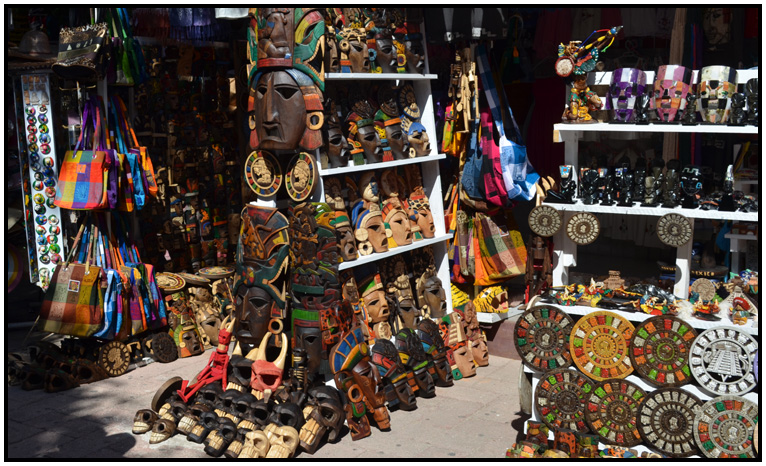
A sample of "souvenirs", Tulum Mayan Ruins, Mexico, 2013.
At the Mayan Cultural center, Maya Ha, many of the same articles are available... plus some very nice and spendy obsidian artwork.
copyright d. holmes chamberlin jr architect llc
page last revised february 2020



















